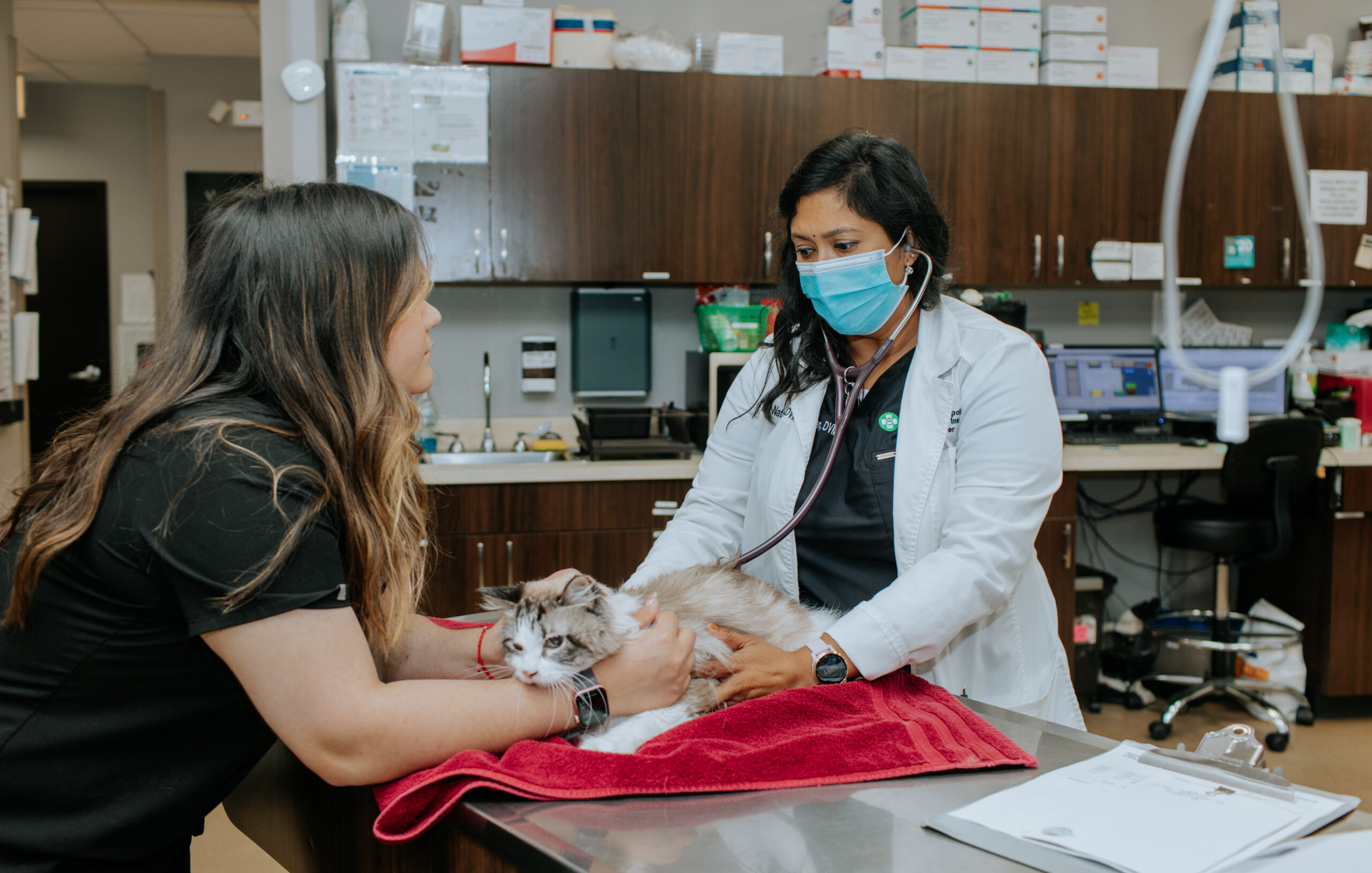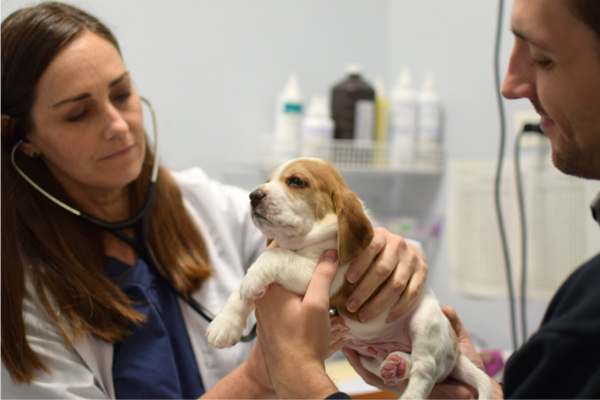Common Pet Injuries That Require an Immediate Visit to an emergency vet bellingham
Common Pet Injuries That Require an Immediate Visit to an emergency vet bellingham
Blog Article
Everything About Vet Surgical Treatment: Recognizing the Significance of Expert Treatment for Your Animals
Veterinary surgery is a vital element of pet healthcare. It encompasses numerous treatments, from regular elective surgical treatments to urgent interventions. Understanding the complexities of these surgical treatments can help family pet owners make notified choices. The preparation, implementation, and healing phases are essential for guaranteeing the well-being of pets. With correct knowledge, owners can navigate the intricacies of vet care. What elements should be considered prior to a family pet undergoes surgery?
Kinds Of Vet Surgeries
When a pet dog calls for surgical treatment, understanding the numerous kinds of veterinarian surgeries can assist animal owners make notified choices. Veterinary surgeries can be generally categorized into three primary types: optional, immediate, and emergency surgical procedures. Optional surgical procedures, such as spaying or neutering, are prepared treatments that are not immediately dangerous. Immediate surgical procedures, like those for foreign body elimination, should be performed soon but are not dangerous in the moment. Emergency surgeries, such as those attending to severe injury or internal blood loss, are crucial and need immediate attention.Additionally, surgical treatments can differ in complexity, varying from minimally intrusive laparoscopic treatments to much more considerable open surgical treatments. Each kind of surgical treatment brings its own threats and healing procedures. Understanding these classifications allows pet dog owners to participate in significant discussions with vets, resulting in better results for their precious pets.
Planning for Your Pet dog's Surgical procedure
Planning for an animal's surgical procedure involves an extensive list to guarantee all basics are covered. Effective communication with the veterinarian is vital for comprehending the treatment and any required pre-operative actions - animal emergency care bellingham. Furthermore, having clear post-operative care guidelines will help owners give the most effective support for their recovering animals
Pre-Surgery List Basics
Guaranteeing a smooth surgical experience for a family pet needs mindful prep work and focus to information. A pre-surgery checklist is essential for pet dog owners to follow. Verifying the scheduled surgery day and time is vital. Owners need to also verify that their pet has fasted according to the veterinarian's directions, typically for 8-12 hours prior to surgical treatment. Gathering essential medical records, including inoculation background, is essential for the veterinarian's evaluation. It is also recommended to prepare a comfy room in your home for the animal's recuperation after surgery. Finally, owners should have a strategy for transportation to and from the vet facility, ensuring that the animal is safe and secure and comfortable throughout the trip. Adhering to these steps can substantially boost the surgical experience.
Communicating With Your Veterinarian

Effective interaction with the vet is essential for an effective medical experience for pet dogs. Owners need to be prepared to review their family pet's case history, including any kind of pre-existing conditions, medicines, and allergic reactions. This information assists the vet evaluate risks and customize the surgical plan as necessary. In addition, animal owners need to ask concerns relating to the treatment, anesthetic, and anticipated outcomes to assure they fully understand the process. Clarifying any doubts can reduce anxiousness for both the pet dog and the proprietor. It is additionally important to communicate any behavior changes or problems observed in the pet leading up to the surgery. Inevitably, clear discussion cultivates count on and collaboration, guaranteeing that animals obtain the ideal feasible treatment during their surgical journey.
Post-Operative Care Directions
After going over the medical procedure with the vet, pet owners need to concentrate on post-operative treatment instructions to facilitate a smooth recovery for their animals. These guidelines usually include keeping an eye on the surgical website for indications of infection, such as inflammation or discharge. Pets might need to be kept one's cool and confined to avoid too much motion that could disrupt recovery. Discomfort management is essential, so owners should follow the vet's assistance on carrying out medications. In addition, nutritional constraints might be suggested to stay clear of stomach trouble. Routine follow-up visits are very important to guarantee proper healing and attend to any problems. By adhering to these post-operative treatment directions, family pet owners can greatly add to their animal's recuperation and total wellness.
The Surgery Explained
The medical procedure for animals includes essential steps that ensure their security and recuperation. Pre-surgery prep work are necessary for minimizing risks, while post-operative care standards play a vital duty in advertising recovery. Comprehending these components assists family pet proprietors browse the surgical experience better.
Pre-Surgery Preparations
Before a pet dog undertakes surgery, several crucial prep work need to occur to assure a safe and effective treatment. First, a detailed veterinary exam is important to assess the family pet's general health and wellness and determine any kind of possible dangers. This might consist of blood tests, imaging, or various other diagnostics. The veterinarian will also talk about anesthesia choices customized to the pet's particular requirements. Additionally, pet owners are typically instructed to withhold food and water for a specified time before surgical treatment to reduce the risk of issues during anesthetic. It's crucial for owners to provide a full case history, consisting of any type of medicines or allergic reactions, guaranteeing the medical team has all essential information. Proper interaction and adherence to pre-surgery guidelines can substantially enhance the outcome of the procedure.
Post-Operative Care Guidelines
Correct post-operative treatment is necessary for making certain a pet dog's recovery complying with surgical treatment. After the procedure, pet dogs should be kept an eye on very closely for any type of indicators of difficulties, such as too much blood loss, swelling, or unusual behavior. It is very important to comply with the vet's instructions pertaining to drugs, including painkiller and anti-biotics. Animals must be kept in a peaceful, comfortable atmosphere to decrease anxiety and promote healing. Limiting activity is essential; short, leashed walks may be necessary, however leaping or running must be avoided. Regular follow-up consultations need to be arranged to examine the healing procedure. In addition, the surgical site needs to be kept tidy and completely dry, with any kind of indicators of infection reported to a veterinarian without delay. Abiding by these guidelines improves recovery results.
Anesthesia and Discomfort Administration
Efficient anesthesia and discomfort management are important components of veterinary surgery, guaranteeing that pets stay comfortable and risk-free throughout the treatment. Vets analyze each pet's private needs, considering aspects such as age, weight, health status, and the kind of surgery being performed.Anesthesia methods generally consist of a mix of pre-anesthetic medications, induction representatives, and inhalant anesthetics, enabling accurate control over the animal's degree of awareness. Surveillance throughout surgical treatment is vital; vets constantly observe crucial indications to address any kind of potential issues promptly.Pain monitoring approaches might include opioids, non-steroidal anti-inflammatory medicines (NSAIDs), and anesthetics, tailored to the pet's details situation. This multifaceted approach assists minimize discomfort and promotes a smoother medical experience. By prioritizing reliable anesthesia and discomfort administration, veterinary professionals improve the overall welfare of animals undergoing procedures, guaranteeing they obtain the highest requirement of care.
Post-Operative Care and Recuperation
Adhering to surgical procedure, the focus moves to post-operative treatment and recuperation, which is essential for ensuring an animal's safe go back to typical activities. During this duration, family pets require a silent, comfy environment to help healing. Owners should carefully check their animals for any kind of indicators of discomfort or uncommon behavior.Veterinary guidelines typically include details guidelines connected to medication management, wound here care, and nutritional changes. It is crucial to stick to these referrals to decrease problems and advertise healing. Pet dogs might need to be restricted from strenuous activities, such as running or leaping, throughout their healing period (emergency vet near me).Regular follow-up consultations with the veterinarian enable tracking of the animal's progression and prompt changes to the treatment plan. Giving emotional support and companionship can additionally boost an animal's recuperation experience, helping to relieve tension and anxiousness. On the whole, thorough post-operative care plays a significant role in attaining an effective recuperation
Identifying Problems After Surgical Treatment
Exactly how can family pet owners identify complications after surgical treatment? Recognition of specific signs is vital for making sure the health of family pets throughout recovery. Typical indicators include excessive swelling, soreness, or discharge at the surgical website, which may symbolize infection. Furthermore, relentless discomfort, shown by grumbling or reluctance to relocate, ought to prompt immediate interest. Adjustments in hunger or water consumption can additionally show difficulties; a decline in these behaviors might indicate pain or distress.Moreover, animal proprietors need to monitor their pet dogs for any type of unusual behavior, such as lethargy or difficulty breathing, as these can be indications of major problems. Vomiting or diarrhea following surgery may need immediate veterinary assessment. Acknowledging these complications early can significantly influence a pet's healing procedure, emphasizing the value of caution and punctual communication with a veterinarian for any worrying signs and symptoms.
The Duty of Veterinary Experts in Surgical Treatment
Veterinary professionals play an important function in guaranteeing the safety and success of operations for animals, particularly complying with surgical treatment when checking and care are critical. These experts include veterinarians, vet service technicians, and support personnel, all of whom add specialized abilities to the surgical process.Before surgical procedure, veterinarians perform detailed assessments to analyze the animal's wellness, guaranteeing that any hidden conditions are managed. During the treatment, the surgical team offers anesthesia, preserves sterile settings, and monitors key indications, all essential for reducing risks.Post-operative care is just as substantial; vet professionals observe for complications, handle pain, and overview owners on healing techniques. Their proficiency enables them to identify early signs of distress or infection, making sure prompt treatment. Inevitably, the collaborative initiatives of veterinary professionals in surgical treatment promote a risk-free environment, promoting the health of family pets throughout the surgical trip.

Regularly Asked Concerns
How Do I Choose the Right Vet Cosmetic Surgeon for My Animal?
Choosing the best veterinary surgeon involves looking into certifications, reading reviews, and evaluating the center's atmosphere. It is necessary to mirror on the doctor's experience with certain treatments and their interaction design when choosing.
What Prevail Misconceptions Regarding Veterinarian Surgeries?
Usual false impressions concerning veterinarian surgeries consist of beliefs that they are constantly high-risk, unnecessary, or just for emergencies. Numerous pet proprietors undervalue the benefits of precautionary procedures and the ability associated with veterinary surgical care.
Just How Much Will My Pet dog's Surgery Expense?
The expense of an animal's surgical procedure can differ considerably based upon elements such as the kind of treatment, the vet's experience, and geographic location (tplo surgery for dogs). Generally, costs range from a few hundred to numerous thousand dollars

Can My Animal Eat Prior To Surgical Procedure?
Before surgery, it is normally recommended that family pets avoid eating for a certain duration. This fasting helps in reducing the risk of complications throughout anesthesia. Proprietors need to consult their vet for accurate guidelines tailored to their pet's demands.
What if My Family Pet Has Pre-Existing Health Issues?
When a family pet has pre-existing health conditions, it's crucial for the veterinarian to evaluate these factors before surgery. This evaluation warranties appropriate preventative measures are taken, minimizing threats and maximizing the animal's total safety and security during the treatment.
Report this page